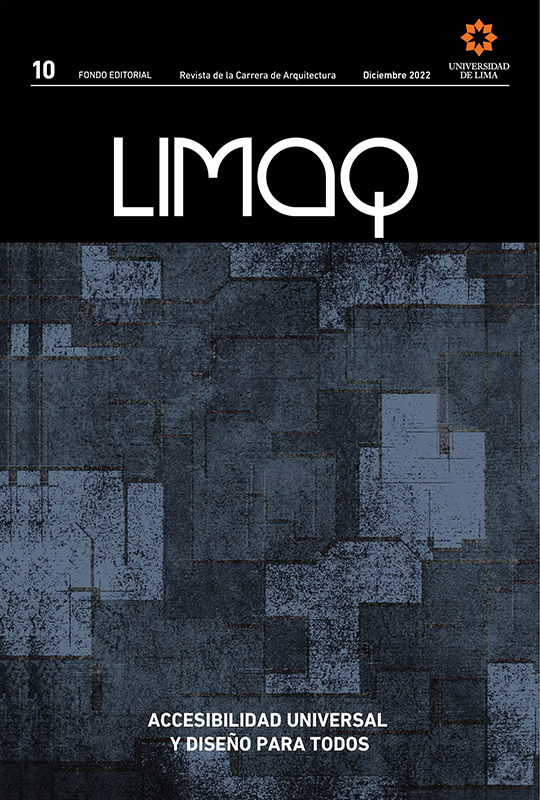Service-learning and maker culture Development of Educational Tools for Children with Cerebral Palsy (CP) and Cognitive Disabilities
DOI:
https://doi.org/10.26439/limaq2022.n010.5246Keywords:
design thinking, experiential practice, maker culture, service-learningAbstract
Service-learning projects are pedagogical opportunities to immerse students into collaborative methodologies, community participation, and experiential learning by implementing and evaluating design projects that educate them on Maker culture. This article presents a learning experience with Engineering students from a private university in southwestern Colombia, who developed didactic materials for an educational institution committed to children with cerebral palsy and cognitive disabilities. The project started by narrowing down the problem with the school community and developing prototypes at Cali Fablab, which were later validated with teachers of the beneficiary institution. The work team consisted of Engineering (2), Design (1), and Education (1) professors, the teachers of the beneficiary institution, and twenty engineering students. Five didactic devices, which were affordable and adaptable to the conditions of the project problem, were delivered to the beneficiary institution.
Downloads
References
Abele, E., Metternich, J., Tisch, M., Chryssolouris, G., Sihn, W., ElMaraghy, H., & Ranz, F. (2015). Learning factories for research, education, and training. Procedia CiRp, 32, 1-6.
Batlle, R. (2018). Guía práctica de aprendizaje-servicio. Santillana Educación, S. L. https://roserbatlle.net/wp-content/uploads/2018/09/Guia-practica-ApS.pdf
Bell, L., Brown, A., Bull, G., Conly, K., Johnson, L., McAnear, A., & Sprague, D. (2010). A special editorial: educational implications of the digital fabrication revolution. TechTrends, 54(4), 2-5. doi:10.1007/s11528-010-0423-2)
Berg, D. R., Buchanan, E. A., & Lee, T. (2016). A methodology for exploring, documenting, and improving humanitarian service learning in the university. Journal of Humanitarian Engineering, 4(1).
Blikstein, P. (2018). Maker movement in education: History and prospects. Handbook of technology education, 419, 437.
Bosman, L., Chelberg, K., & Winn, R. (2017). How does service learning increase and sustain interest in engineering education for underrepresented pre-engineering college students? Journal of STEM Education: Innovations and Research, 18(2).
Burke, J. (2015). Making sense: can makerspaces work in academic libraries? ACRL Proceedings 2015 (pp. 497-504). http://www.ala.org/acrl/sites/ala.org.acrl/files/content/conferences/confsand preconfs/2015/Burke.pdf
Cohen, J. Jones, W. M., Smith, S., & Calandra, B. (2017). Makification: towards a framework for leveraging the maker movement in formal education. Journal of Educational Multimedia and Hypermedia, 26(3), 217-229.
Cross, N. (2014). Design thinking: understanding how designers think and work. Berg. Dougherty, D. (2012). The maker movement. Innovations: Technology, Governance, Globalization, 7(3), 11-14. doi:10.1162/INOV_a_00135
Duffy, J., Tsang, E., & Lord, S. (2000). Service-learning in engineering: what, why and how. 2000 Annual Conference. Expin Media Lab. (s. f.). https://expin.uao.edu.co/
FabLab Cali (s. f.). https://www.fablabcali.org
Fullan, M. G., & Langworthy, M. (2013). Towards a new end: new pedagogies for deep learning. Collaborative Impact.
García, C. (2016). (Casi) Todo por hacer. Una mirada social y educativa sobre los fab labs y el movimiento maker. Fundación Orange. http://www.fundacionorange.es/wpcontent/uploads/2016/05/Estudio_Fablabs_Casi_Todo_por_hacer.pdf
Gershenfeld, N. (2012). How to make almost anything: the digital fabrication revolution. Foreign Affairs, 91(6), 43-57. http://www.foreignaffairs.com/articles/138154/neil-gershenfeld/how-to-make-almostanything?page=show
Halverson, E., & Sheridan, K. (2014). The maker movement in education. Harvard Educational Review, 84(4), 495-505. doi:10.17763/haer.84.4.34j1g68140382063
Hatch, M. (2014). The maker movement manifesto: rules for innovation in the new world of crafters, hackers, and tinkerers. McGraw-Hill Education.
Martínez, S., & Stager, G. (2013). Invent to learn: making, tinkering, and engineering in the classroom. Constructing Modern Knowledge Press.
Naciones Unidas (s. f.). Objetivos de Desarrollo Sostenible. https://www.un.org/sustainabledevelopment/es/education/
Papert, S. (1991). Situating constructionism. En S. Papert & I. Harel (Eds.), Constructionism (pp. 1-11). Ablex.
Saavedra, L. (2019, septiembre). La filosofía maker como estrategia para el fortalecimiento de competencias transversales en ingeniería. Simposio “Encuentro Internacional de Educación en Ingeniería ACOFI 2019”.
Salem Press Encyclopedia (2021). Maker culture and society. https://ezproxy.uao.edu.co:2813/eds/detail/detail?vid=2&sid=7aaf106b-5c24-47a5-8b84-c09c3ebc8567%40sessionmgr4006&bdata=Jmxhbmc9ZXMmc2l0ZT1lZHMtbGl2ZQ%3d%3d#AN=148527086&db=ers
Sugru (s. f.). The Fixer Manifesto. https://sugru.com/our-mission#pm-36734
Torrone, B. (2006). The maker´s bill of rights. Make Magazin, 80. https://makezine.com/2006/12/01/the-maker’s-bill-of-rights/
Universidad Autónoma de Occidente (2015). Proyecto Educativo Institucional. Colección Documentos Institucionales.
Universidad Autónoma de Occidente (2021a). Misión, visión y perfil. https://www.uao.edu.co/informacion-institucional/mision-y-vision/
Universidad Autónoma de Occidente (2021b). Semillero Maker UAO. https://www.uao.edu.co/semillero-makeruao/
Vega, C., & Saavedra, L. (2018). Actividad complementaria, espacio formativo desescolarizado desde la perspectiva de aprendizaje basado en equipos. PBL 2018.
Vossoughi, S., & Bevan, B. (2014). Making and tinkering: a review of the literature. National Research Council Committee on Out of School Time STEM, 1-55. http://sites.nationalacademies.org/cs/groups/dbassesite/documents/webpage/dbasse_089888.pdf
World Economic Forum (2016, enero). The future of jobs: employment, skills and workforce strategy for the fourth industrial revolution. Global Challenge Insight Report, World Economic Forum. http://www3.weforum.org/docs/WEF_FOJ_Executive_Summary_Jobs.pdf



